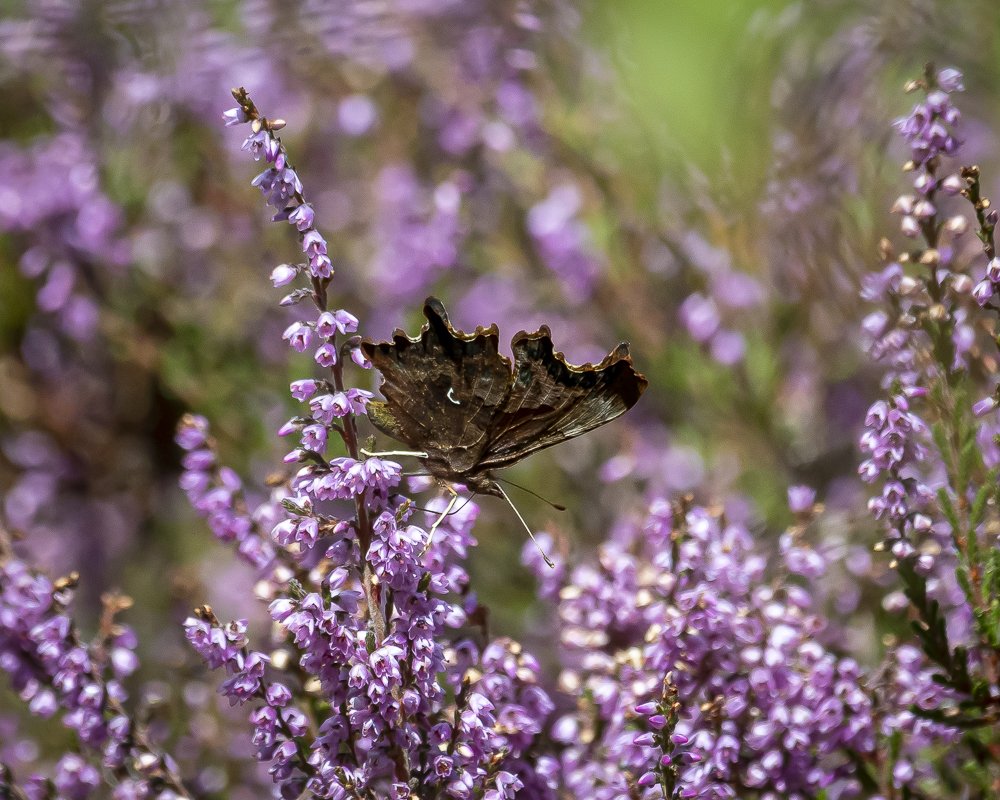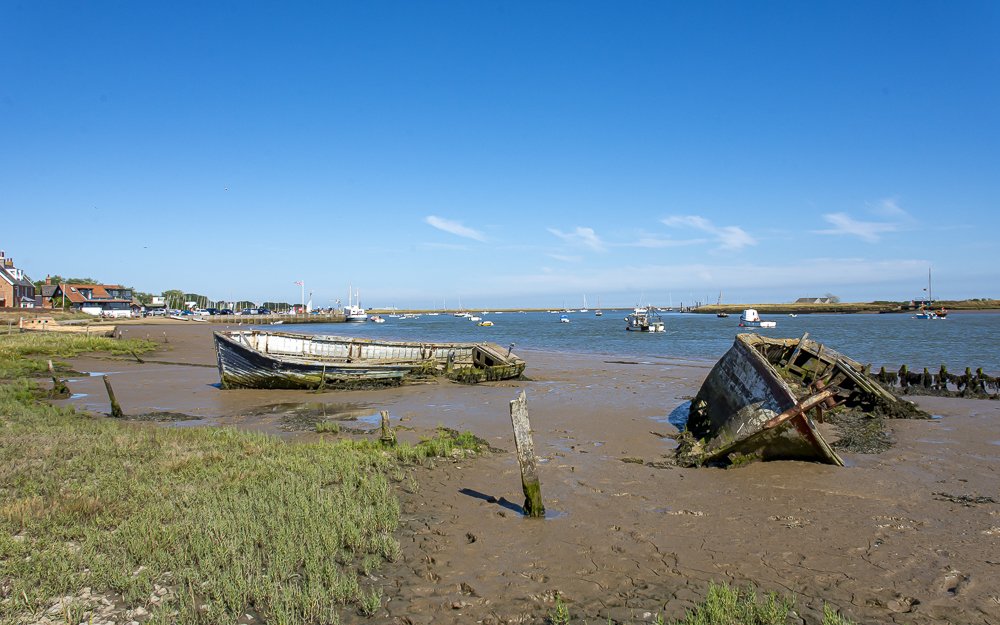I think the last significant rain we had in this part of the country was early June and finally on August 25th it RAINED and we had puddles! Who would have thought we would be excited about rain in August, but that was it, just one morning.
A Large White Butterfly on the Hebe shrub growing in a pot in the garden. The garden may be looking a little sad and parched now but we have managed to keep the container plants flowering and they are attracting a few butterflies.
This is a Hornet Mimic Fly, a very large Hover fly which lives up to its name. It can be easily mistaken for a Hornet but it is quite harmless.
Now this is a Hornet. They have been visiting the garden pond and the birdbath for most of August obviously after water. They can be quite scary as they are much bigger than their cousins the Wasp, but they are less aggressive. The Hornets visiting our garden have not taken any notice of us at all and have just been focused on the water. They are also important pollinators so as long as they keep themselves to themselves they are welcome. We still kept a respectful distance though, no point in antagonizing them.
A female Common Blue Butterfly. For a few days on our dog walks the Common Blue Butterflies were very active. A very pretty tiny little butterfly that look just as pretty with their wings shut as when they are open. The Male is a bright blue whereas the female is brown with a dusting of blue near her body.
The morning we chose to visit the farm was also the morning of the Swallows, how lucky was that. About 30 Swallows, adults and young practicing their landing and take off skills on the wires. Such a joy to watch, especially this year as Swallow numbers have been very low. Hope they make it on their long trip to Africa and back again for next summer. An incredible journey.
So many in flight they did tend to get in each others way sometimes. Its all about the learning.
Oops! nearly overshot the mark that time.
Just need a little rest from flying now……
Sunflowers on the farm. Lovely.
Insects loving the sunflowers.
Brown Argus Butterfly. Another great find on the farm.
Really great views of the Red Kites hunting over the farm stubble fields, they were quite vocal as well so maybe some of them were young ones.
This year has been a record year for Hummingbird Hawk Moths. This is a day flying moth that migrates from Southern Europe to the UK in the summer. We were beginning to think we might be the only garden that has not had a visit from one. Then, suddenly, here he is, just for a few seconds and then gone. Wow, we saw it, and got the picture.
Birds are slowly starting to return to the garden. This young Robin was hopping around our pond, again another creature looking for water. Our little pond and birdbath has been a wildlife lifeline this year. Just proves, all living things need water.
A pair of Willow Emerald Damselflies was a first in the garden for us. The Willow Emerald is quite a recent species, first being recorded in East Anglia in 2007. As their name suggests one of the trees they favour for their eggs is Willow but this pair were very taken with our Photonia so maybe we should look for some eggs along the bark, if we knew what we were looking for that is.
Willow Emerald Damselflies in the Photonia in the garden.
Towards the end of August we booked an over night stay in Suffolk, at the Red Lion, Theberton. Accommodation was in a cabin at the back of the pub overlooking farmland, and was very dog friendly so Little Eva was able to come with us too. Tom and Helen were very welcoming and the food was excellent as were the local ales and cider.
First stop was at Aldeburgh to get some sea air after all the hot still weather at home. Although hot, it was lovely to walk along the beach from the Aldeburgh Shell toward Thorpeness and to take in the sea air and feel like you could breathe. Little Eva just loved a paddle all along the waters edge.
A young Black Headed Gull keeping a watchful eye on us as we walked the beach.
The “House in the Clouds” Thorpeness. This was originally built as a water tower in 1923 to receive water pumped from the nearby windmill. It is now a holiday let.
After lunch we took a walk at Sizewell. Not much to see in the way of wildlife but a great dog walk. We did see several young Herring Gulls, and a few terns out at sea plus a lone Gannet. We just wonder what the landscape will look like when the next phase of the Nuclear Power Station is built.
A Little egret enjoying the late afternoon sun at Dingle Marshes near Dunwich. We had hoped to spot a Barn Owl but not lucky this time.
Sunset at the ruins of Greyfriars Medieval Friary near Dunwich.
Dunwich Heath is suffering from the prolonged hot dry weather. Only small pockets of flowering heather can be found. Normally this view would be a spectacular patchwork of Purple Heather. It will come back, but not this year.
A Comma Butterfly on a rare patch of flowering heather on Dunwich Heath.
It was very hot out on there so we took a seat in the shade near the ditch that borders one side of the heath with Mindsmere RSPB. This Common Lizard had the same idea.
The story of the Heather this year in one picture. Going,going, gone……….
Ruddy Darters were showing off their vivid red colours.
The view from Dunwich Heath towards Sizewell. What will this view be like in a few years time. We need to be masters of our own energy supply in this country, but at what cost.
A stop for lunch at Orford and a lovely lunch it was too. Fish and Chips at the Jolly Sailor washed down with an Adnams Cider. Another dog friendly pub with a huge tent/sail construction in the garden so everyone could eat in the shade and little Eva could stay cool as well. In the afternoon himself had to have a snooze back at the car, so herself went for a walk along the banks of the river Alde and sat for a while watching the coming and goings in the busy little harbour, with views across to Orford Ness now managed by the National Trust.
Wild, remote and exposed, Orford Ness contains the ruined remnants of a disturbing past. Ranked among the most important shingle features in the world, rare and fragile wildlife thrives where weapons, including atomic bombs, were once tested and perfected. We couldn’t visit this time as no dogs aloud.
On the morning of “the rain” we thought we would go to a hide where we knew Kingfishers are regularly seen. The hide is usually very busy and time can be limited as you make way for everyone to be able to spend time there. It is quite a walk and picking a dull damp day meant we were the only ones there, until later when one other person showed up. We were rewarded with some really special views of a fishing Kingfisher.
An expert at fishing, caught one on every dive.
“I will just watch the fish for now. I am a bit full”

































